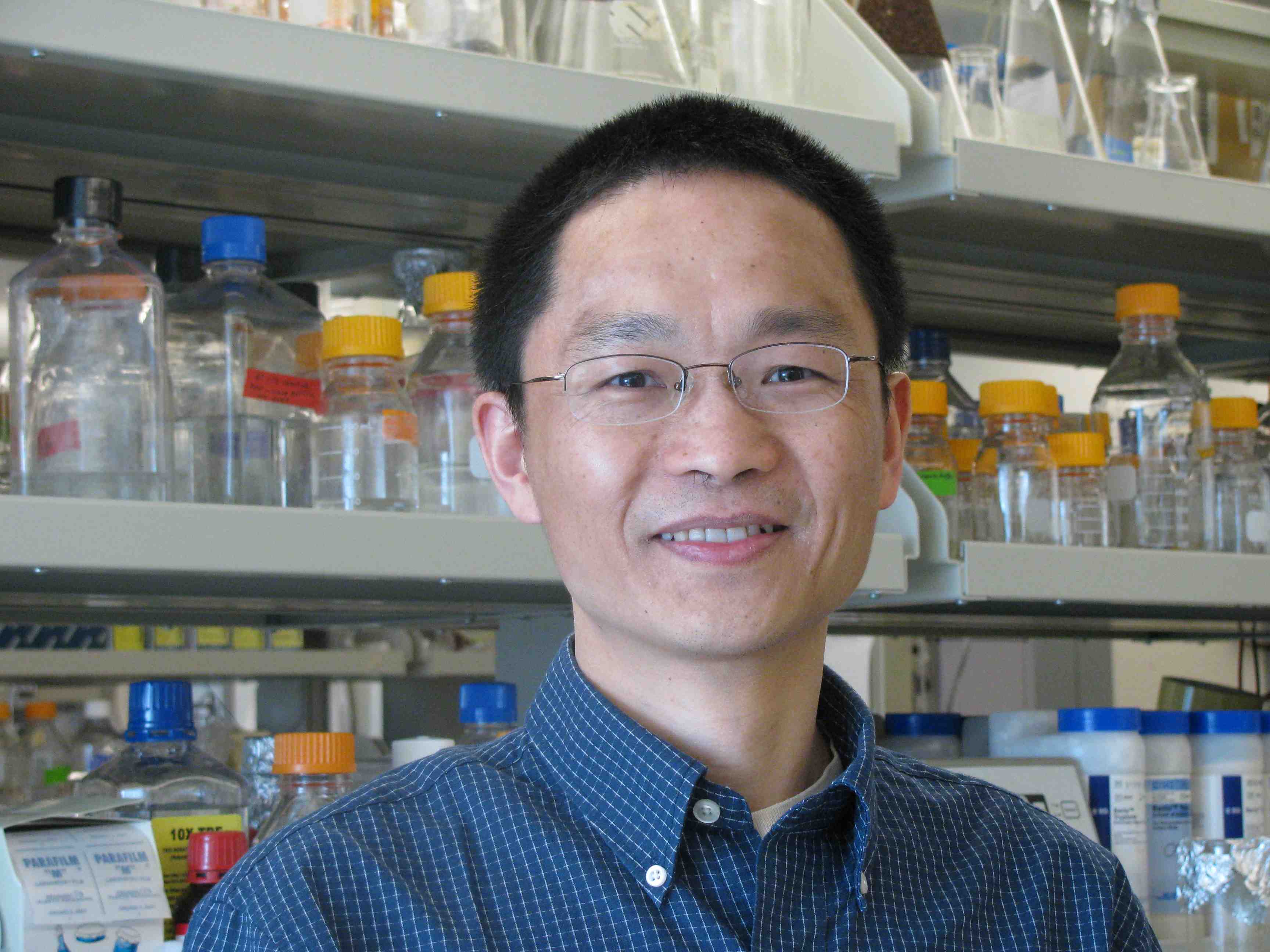
Dr. Yuliang Wu BSc, MSc, PhD
Professor Biochemistry, Microbiology & Immunology- Address
- Room 4D01.1 Health Sciences
Research Area(s)
- Cancers, Genetic disorders, Genome stability, DNA repair, Innate immunity, Helicase
About
Ph.D. 2002, International Centre for Genetic Engineering and Biotechnology (ICGEB), New Delhi, India
M.Sc. 1995, Faculty of Agriculture, Life and Environ ment, Zhejiang University, Hangzhou, China
B.Sc. 1992, Faculty of Agriculture, Life and Environment, Zhejiang University, Hangzhou, China
Dr. Yuliang Wu obtained his BSc and MSc from Zhejiang University, China, in 1995 and 1998 respectively, and his Ph.D. from the International Centre of Genetic Engineering and Biotechnology (ICGEB), India, in 2002. For the following eight years, Dr. Wu did his postdoc training at the University of Alberta, Canada, and at the National Institute on Aging-NIH, where he studied the molecular and cellular basis of human genetic diseases characterized by genomic instability. Dr. Wu joined the Department of Biochemistry at the University of Saskatchewan, Canada, in April 2011.
The integrity of our genomes is threatened continuously by DNA damage caused by replication, reactive oxygen species, radiation, and exogenous agents. All cells have developed a diverse range of repair pathways, which involve a large number of DNA repair proteins. When the DNA repair processes do not function correctly, a likely result is instability of the genome that leads to human diseases, cancers, and aging. Our research focuses on DNA repair proteins, particularly helicase and single-strand DNA binding proteins.
Helicases are molecular motors that couple the energy of nucleoside triphosphate hydrolysis to the unwinding and remodeling of structured DNA or RNA. They are involved in virtually all aspects of nucleic acid metabolism, including replication, repair, recombination, transcription, chromosome segregation, and telomere maintenance. Currently we are focusing on three helicases: 1) FANCJ, also known as BRIP1 or BACH1, the mutations of which are linked to breast cancer, ovarian cancer and Fanconi anemia, 2) ChlR1, also known as DDX11, which is associated with the unique genetic disorder Warsaw Breakage Syndrome that is characterized by sister chromatid cohesion defects, and 3) RTEL1, regulator of telomere elongation helicase 1, which participates in telomeric metabolism, the mutations of which give rise to glioma, dyskeratosis congenita, and Hoyeraal-Hreidarsson syndrome. In addition, we are interested in single-strand DNA binding proteins (hSSB1 and hSSB2). Collectively, through structural and functional studies of these DNA repair proteins, we aim to understand the molecular mechanisms underlying genomic instability. Ultimately the molecular information derived from these projects may be exploited to advance diagnosis, prognosis, and treatment of human diseases and cancers.
Recently, we also focused on several DEAD-box helicases (DDX43, DDX41, and DDX59) and investigated their roles in DNA repair, mRNA splicing, innate immunity, RNA granules formation, and underlying molecular mechanisms with linked diseases and cancers.
Recent Publications
- Singh RS, Vidhyasagar V, Yang S, Arna AB, Yadav M, Aggarwal A, Aguilera AN, Shinriki S, Bhanumathy KK, Pandey K, Xu A, Rapin N, Bosch M, DeCoteau J, Xiang J, Vizeacoumar FJ, Zhou Y, Misra V, Matsui H, Ross SR, Wu Y. DDX41 is required for cGAS-STING activation against DNA virus infection. Cell Rep. 2022 May 24;39(8):110856. PMID: 35613581
- Singh RS, Arna AB, Dong H, Yadav M, Aggarwal A, Wu Y. Structure-function analysis of DEAD-box helicase DDX43. Methods. 2022 Mar 4:S1046-2023(22)00068-8. PMID: 35257897
- Brosh RM Jr, Wu Y. An emerging picture of FANCJ's role in G4 resolution to facilitate DNA replication. NAR Cancer. 2021 Aug 20;3(3):zcab034. PMID: 34873585
- Yadav M, Singh RS, Hogan D, Vidhyasagar V, Yang S, Chung IYW, Kusalik A, Dmitriev OY, Cygler M, Wu Y. The KH domain facilitates the substrate specificity and unwinding processivity of DDX43 helicase. J Biol Chem. 2021 Jan-Jun;296:100085. PMID: 33199368
- Parameswaran S, Vizeacoumar FS, Bhanumathy KK, Qin F, Islam MF, Toosi BM, Cunningham CE, Mousseau DD, Uppalapati MC, Stirling PC, Wu Y, Bonham K, Freywald A, Li H, Vizeacoumar FJ. Molecular characterization of an MLL1 fusion and its role in chromosomal instability. Molecular Oncology. 2019 Feb;13(2):422–440.
- Jing A, Vizeacoumar FS, Parameswaran S, Haave B, Cunningham CE, Wu Y, Arnold R, Bonham K, Freywald A, Han J, Vizeacoumar FJ. Expression-based analyses indicate a central role for hypoxia in driving tumor plasticity through microenvironment remodeling and chromosomal instability. NPJ Syst Biol Appl. 2018 Oct 24;4(38).
- Bharti SK, Sommers J, Awate S, Bellani M, Khan I, Bradley L, King GA, Seol Y, Vidhyasagar V, Wu Y, Abe T, Kobayashi K, Shin-ya K, Kitao H, Wold MS, Branzei D, Neuman K, Brosh R. A Minimal Threshold of FANCJ Helicase Activity is Required for its Response to Replication Stress or Double-strand Break Repair. Nucleic Acids Research. 2018 May;46(12):6238-6256. Epub 2018 May.
- Vidhyasagar V, He Y, Guo M, Talwar T,, Singh RS, Yadav M, Katselis G, Vizeacoumar FJ, Lukong E, Wu Y. Biochemical characterization of INTS3 and C9ORF80, two subunits of hNABP1/2 heterotrimeric complex in nucleic acid binding. Biochem J. 2018 Jan 2;475(1):45-60.
- Talwar T, Vidhyasagar V, Qing J, Guo M, Kariem A, Lu Y, Singh R, Lukong K, Wu Y. The DEAD-box Protein DDX43 (HAGE) Is a Dual RNA-DNA Helicase and Has a K-homology Domain Required for Full Nucleic Acid Unwinding Activity. J Biol Chem. 2017 Jun 23;292(25):10429-10443. Epub 2017 May 3.
- Guo M, Vidhyasagar V, Talwar T, Kariem A, Wu Y. Mutational analysis of FANCJ helicase. Methods. 2016 Apr 21:S1046-2023. Epub 2016 Apr 21.
- Venkatasubramanian V, He Y, Guo M, Ding H, Talwar T, Nguyen V, Nwosu J, Katselis G, Wu Y. C-termini are essential and distinct for nucleic acid binding of human NABP1 and NABP2. Biochim Biophys Acta. 2016 Feb;1860(2):371-83. Epub 2015 Nov 10.
- Ding H, Guo M, Vidhyasagar V, Talwar T, Wu Y. The Q Motif Is Involved in DNA Binding but Not ATP Binding in ChlR1 Helicase. PLoS One. 2015 Oct 15;10(10):e0140755.
- Guo M, Hundseth K, Ding H, Vidhyasagar V, Inoue A, Nguyen C-H, Zain R, Lee JS, Wu Y. A distinct triplex DNA unwinding activity of ChlR1 helicase. J Biol Chem. 2015 Feb 20;290(8):5174-89. Epub 2015 Jan 5.
